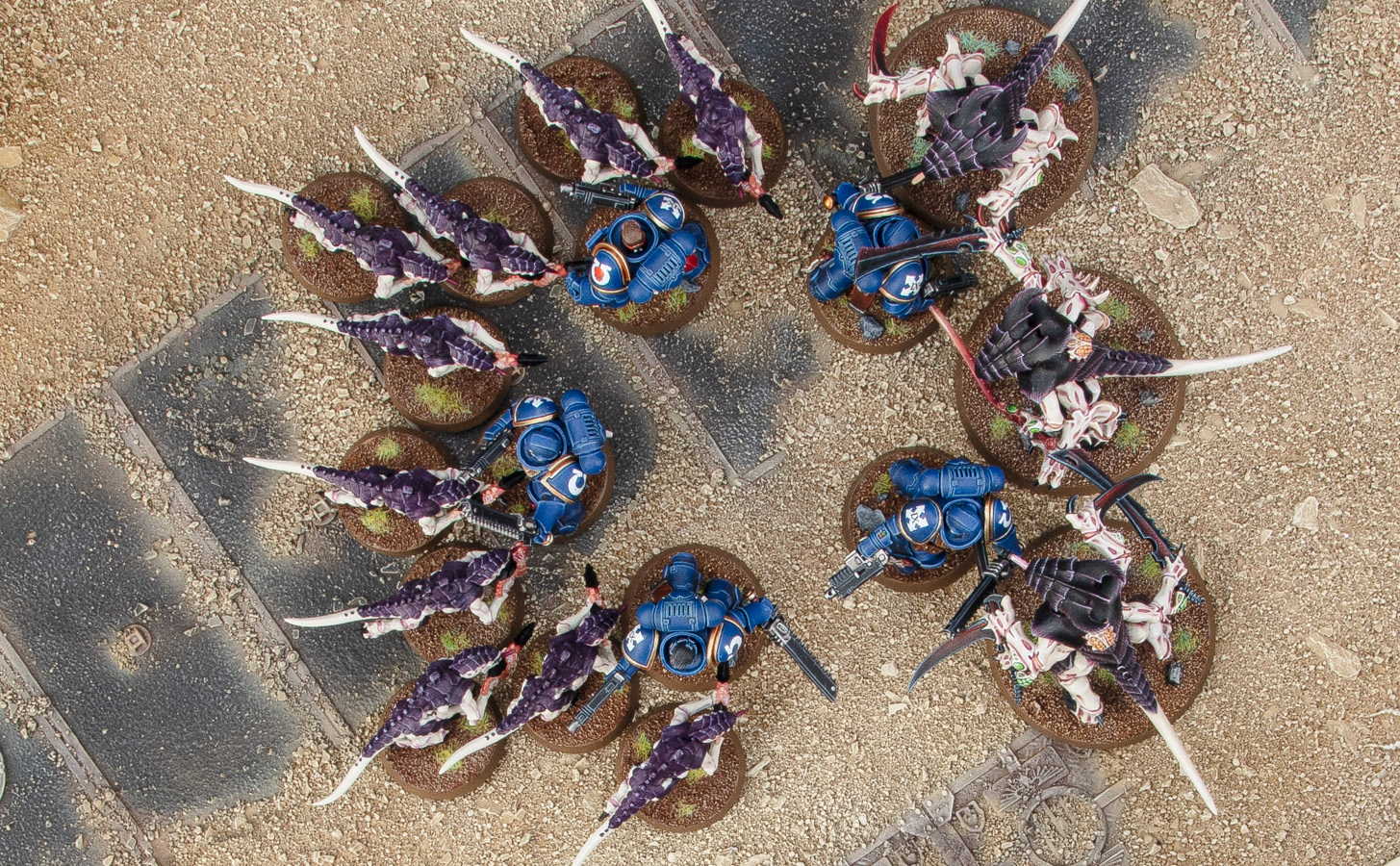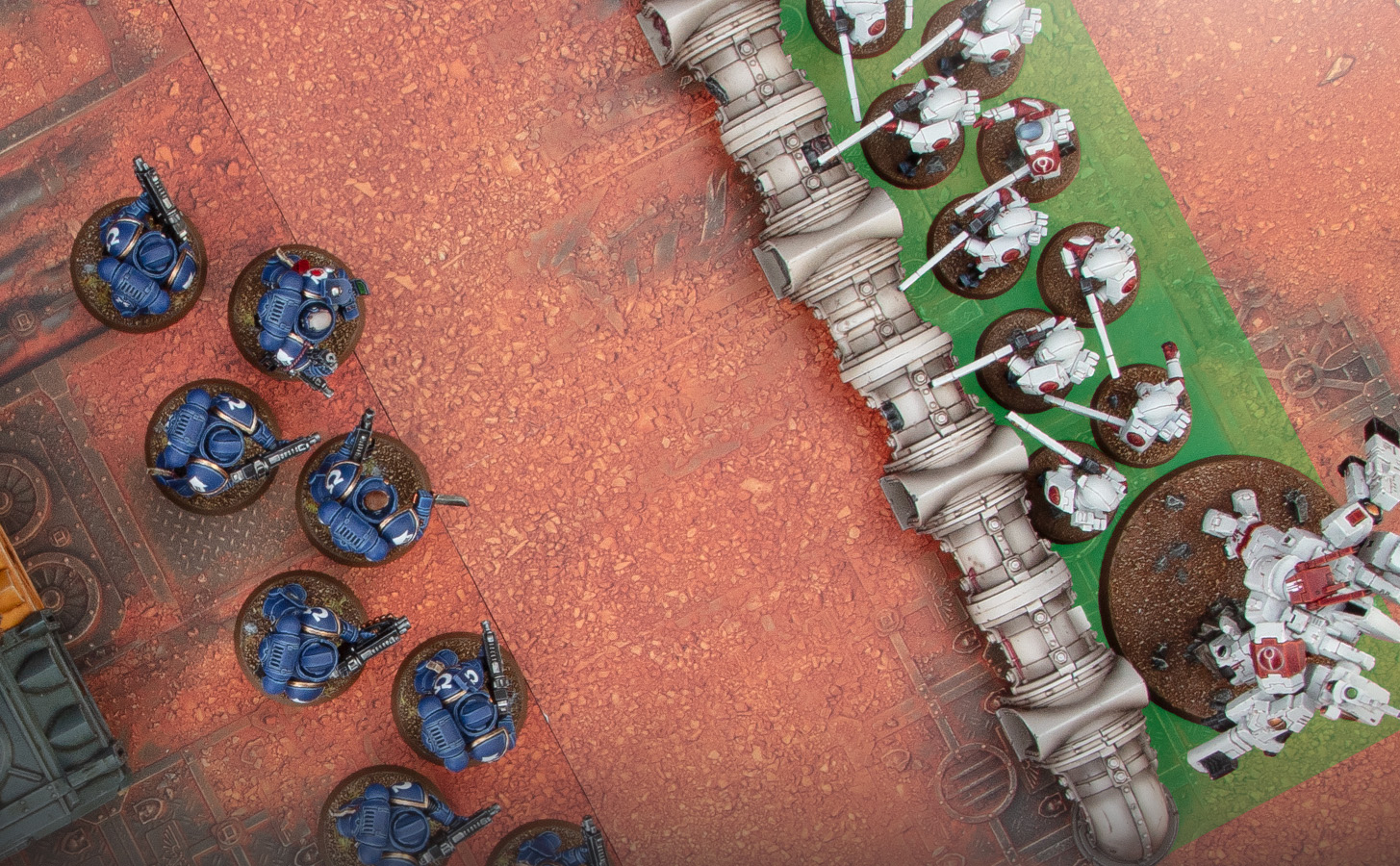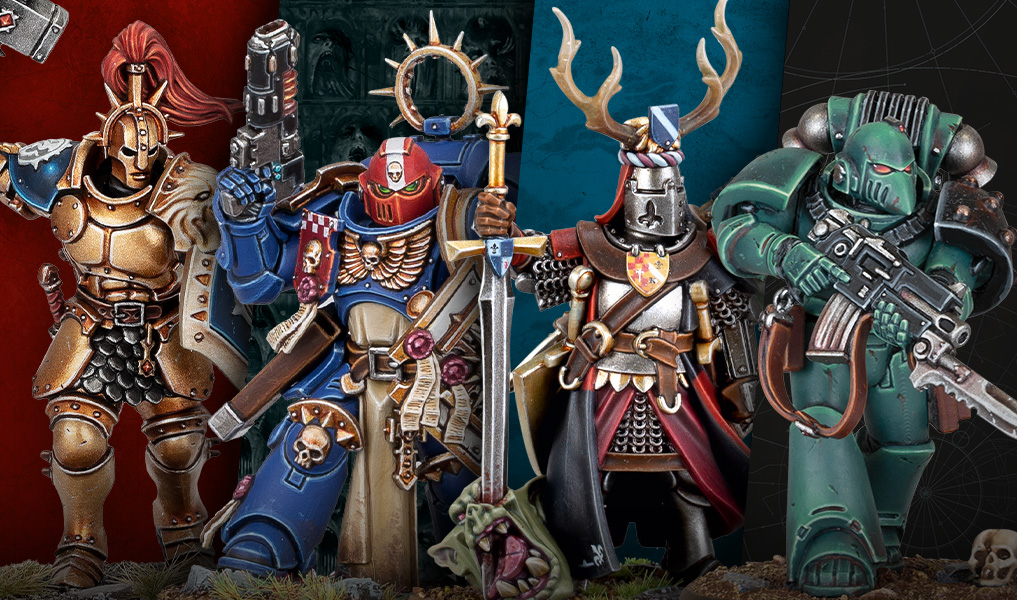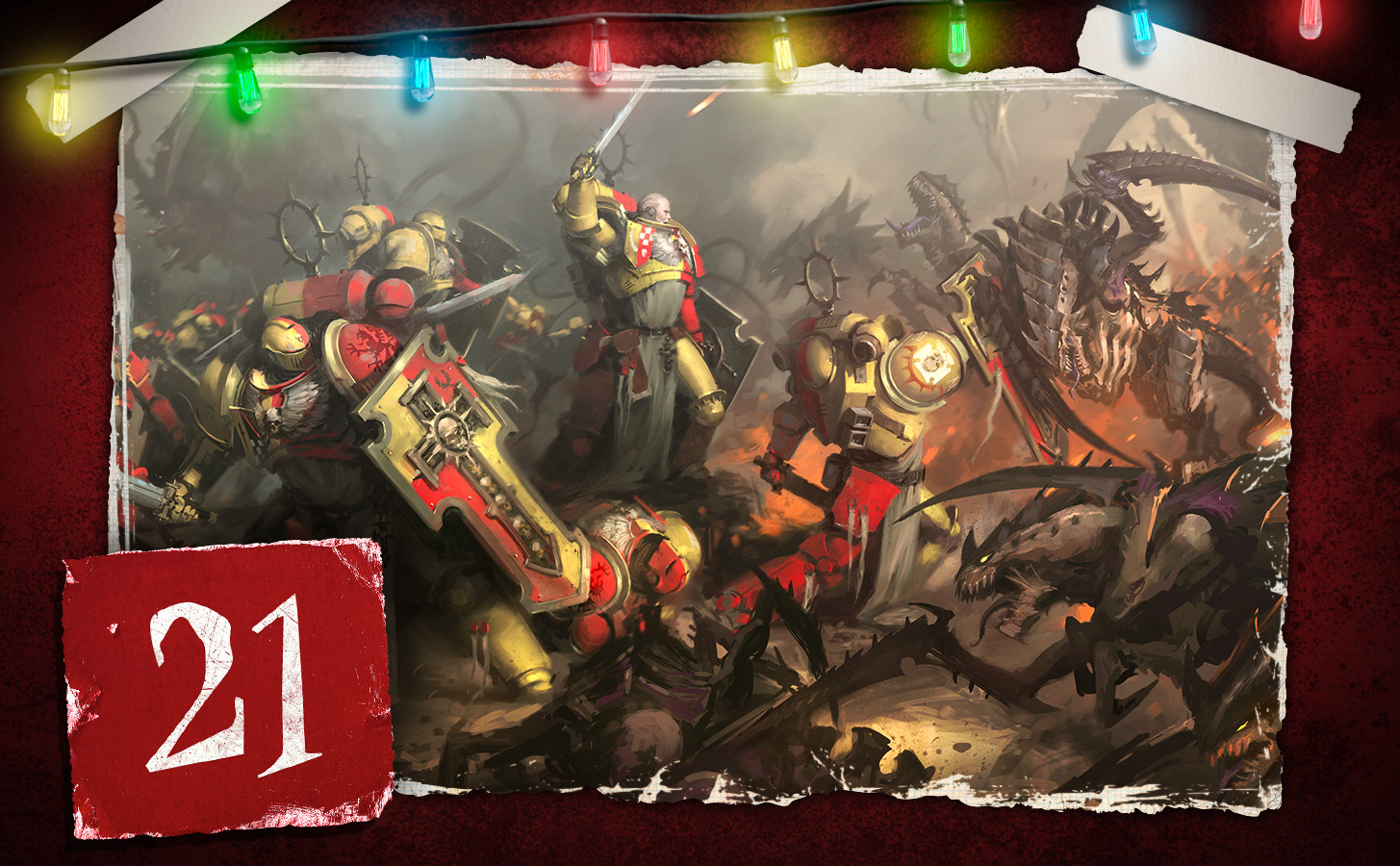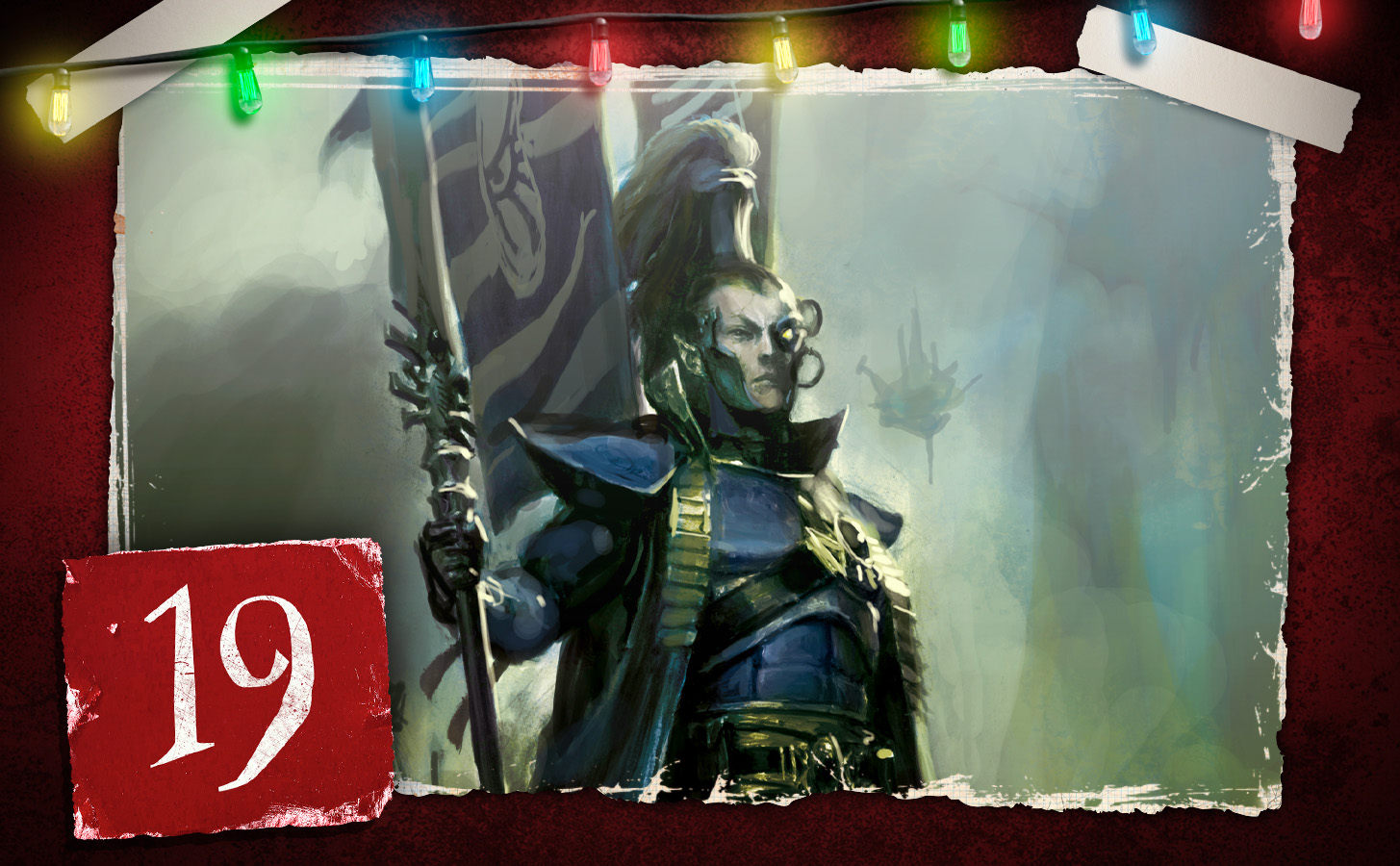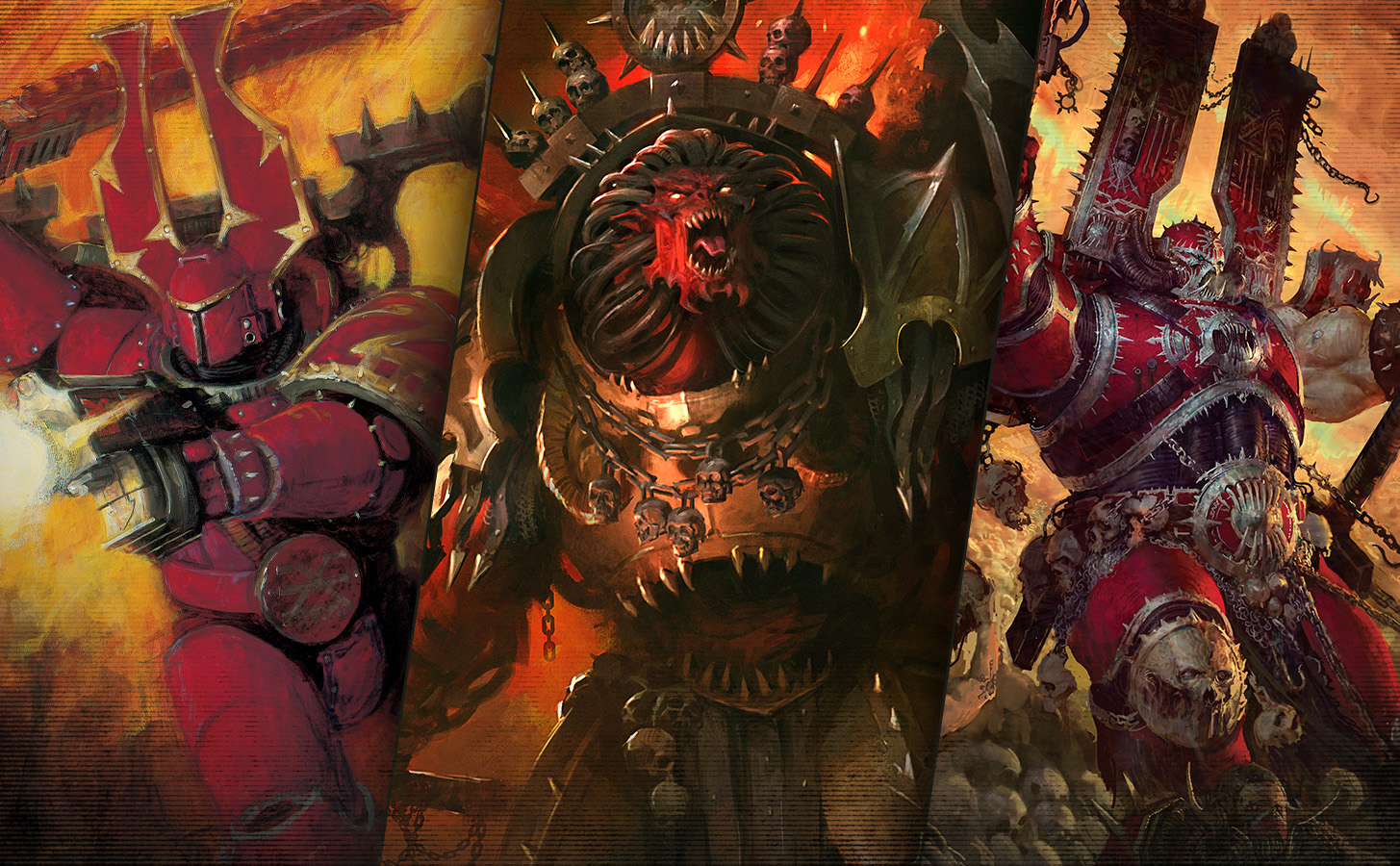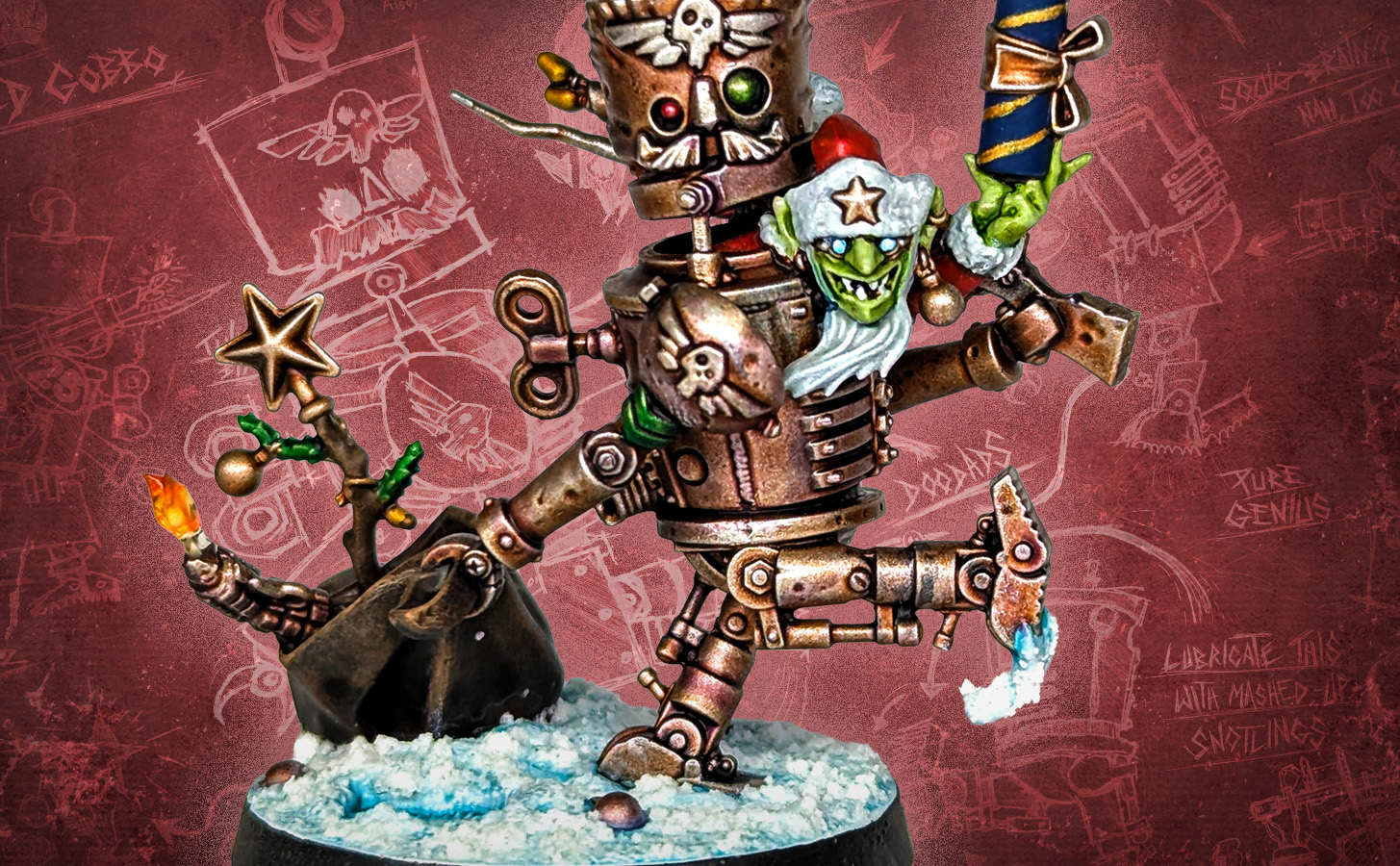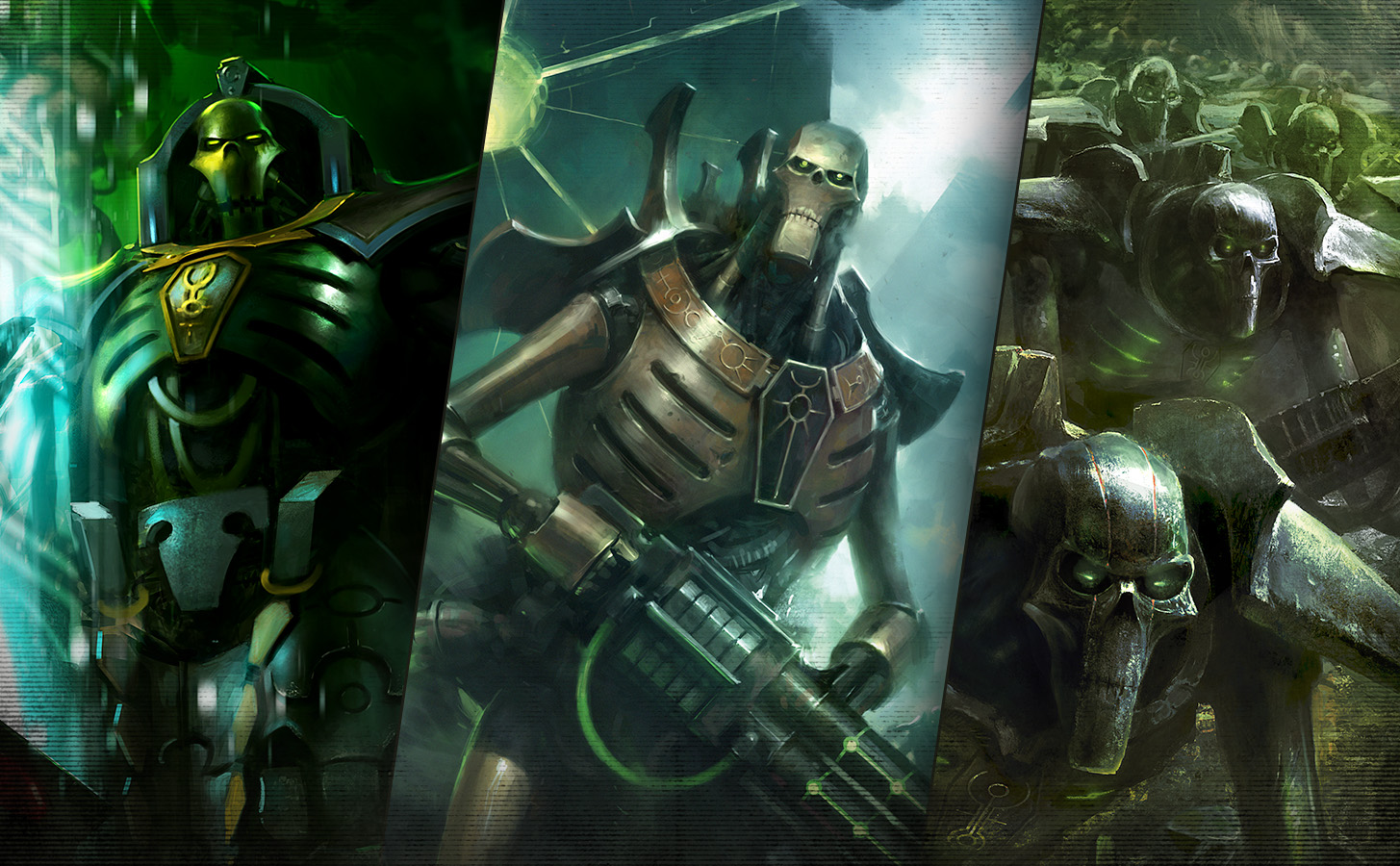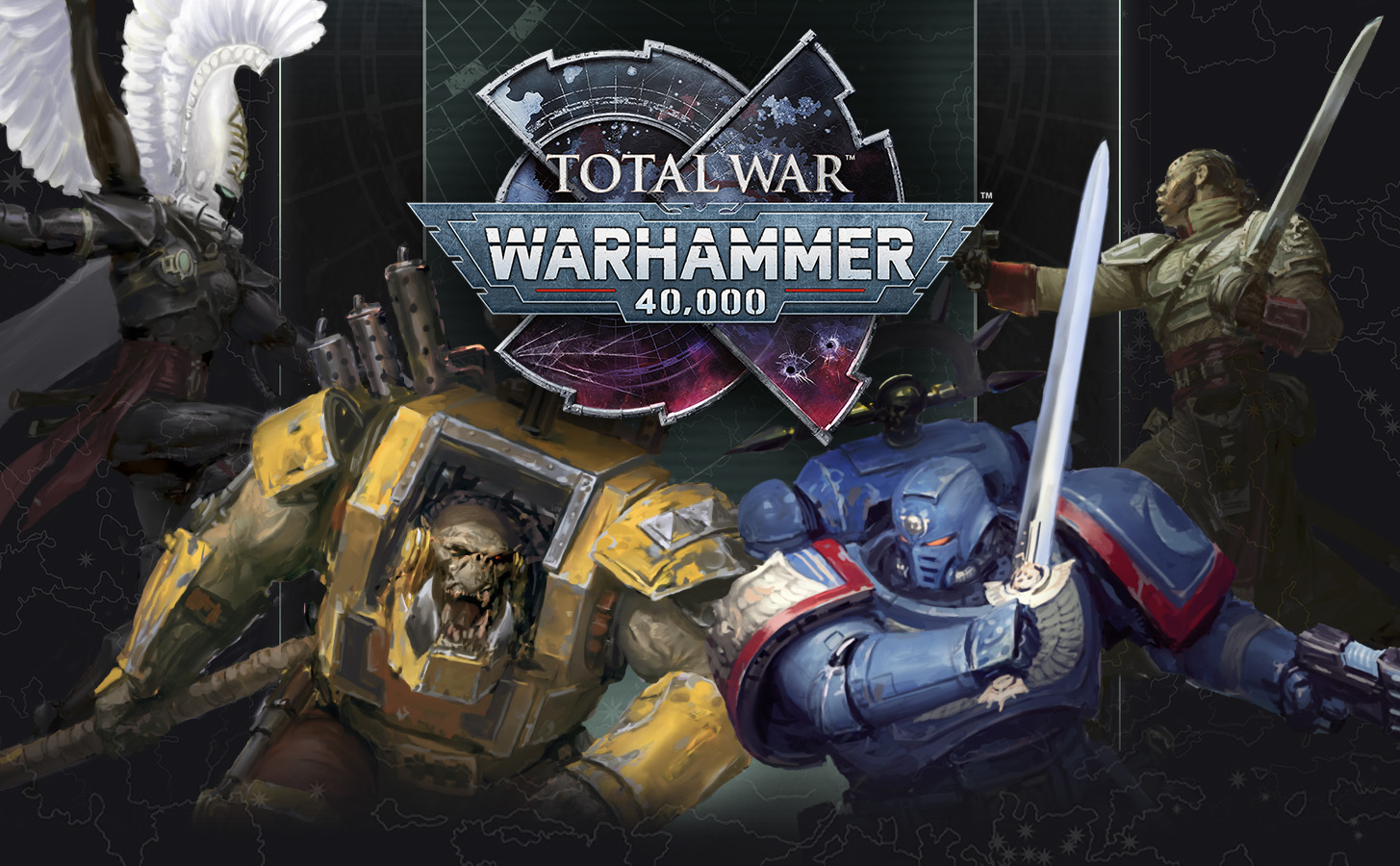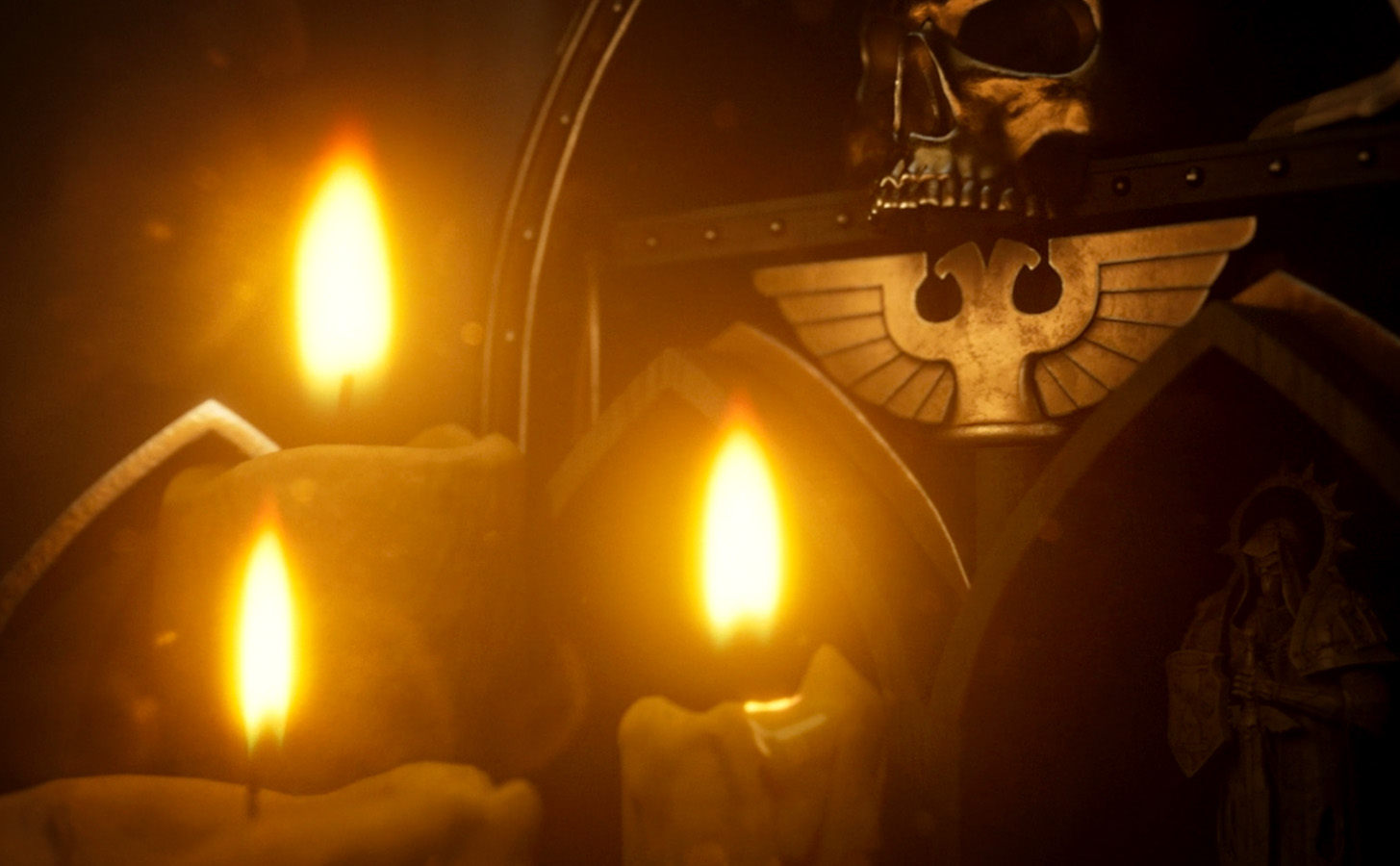There’s an adage among Warhammer players that games can be won and lost at army selection. So just how do you ensure that what you’re putting on the table can give you the best chance of victory? Fresh from looking at each phase of the game, Stephen Box turns his attention to how to analyse your Warhammer 40,000 army in the latest tactics article plucked from the White Dwarf archive.
Stephen: For people who play in tournaments, events or competitions, army analysis is a pretty commonplace practice. Put simply, it involves a player casting a critical eye over the units and faction rules they have picked, and deciding whether they are optimal for the games they will be playing. As an easy example, a player could write an army list based on the models in their collection, look over it and decide they don’t have enough firepower to deal with armoured targets. They may then adjust their army list to include more long-ranged guns or armoured vehicles of their own.
Often the most critical analysis occurs post-battle, after a player has had a chance to field their army on the gaming table. They can assess what worked for them and what didn’t, how they performed in terms of completing their missions, how many Victory points they scored and, ultimately, whether they won. It may be that numerous games are required against different factions for a player to decide what their optimal army is. For people like me who love tweaking army lists, this can be an extremely fun and rewarding aspect of the hobby.
But army analysis isn’t just for competitive players. Most hobbyists are casual gamers, but this doesn’t mean they can’t partake in some army analysis. After all, no one really wants to play a game knowing they will get trounced – they at least want to have a chance at winning! A little bit of army analysis every now and again can help you become more confident with the army you’re using and hopefully give you closer, more rewarding games.
How do we analyse an army list?
A quick look online will show you dozens of ways that people go about analysing their armies. There is no right or wrong way to do it, but I personally focus on how well my army performs in three core areas:
Completing Primary Missions
Completing Secondary Missions
Damage output
The reasons I focus on these areas are as follows. To win a game, you need to score Victory points (VP). To score Victory points, you need to complete Primary and Secondary Missions. If a unit can’t help you complete your missions, they’d better put out a lot of damage to compensate! Their value comes in preventing your opponent from completing their Primary and Secondary Missions.
So how do I analyse my list based on these criteria? I’ve found that the simplest way is to score each unit in my army out of 5 in each category. A score of 1 means they’re poor at a particular aspect, while a score of 5 means they’re good at it. Obviously the situations a unit may find itself in will vary wildly depending on my opponent, their army, the mission we’re playing and the vagaries of dice rolling, but I just go with my gut and give my units what I feel is an honest rating in each area.
It’s probably best to explain all of this with an example. What we need is a willing test subject/victim.
Enter Dan
I often talk through these tactics articles with White Dwarf writer Dan, and he mentioned how he had struggled with his Adeptus Mechanicus army in the studio’s Crusade campaign. We thought it would be interesting to take his 1,000-point army,* analyse his army list and see if there was anything we could do to give him a more satisfying battlefield experience. I started by getting Dan to tell me about his force.
Dan: My army is made up of lots of different units, mostly from when the Adeptus Mechanicus were first released. There’s no real structure to the army other than me picking the models I have in my collection. As a casual gamer, I’m not too bothered about having a competitive army list, but it would be nice to actually score some points when I play a game. In one battle I scored only 15VP! I feel that some of my units, like the Onager Dunecrawlers, really pull their weight. Some of the others, like the Electro-Priests, don’t complement my army list. I also struggle with my Doctrina Imperatives army rule while trying to complete my missions.

Stephen: So now you can put all of your units into a chart and rate each of them based on my three core criteria. You’ll need to look at each unit’s weapons, their stat line, their abilities and how they interact with their army and Detachment special rules. You can see Dan’s analysis below.
Unit | Completing Primary Missions | Completing Secondary Missions | Damage Output | Notes |
1 Tech-Priest Dominus (Malphonic Susurrus Enhancement) | 3 | 2 | 2 | Can give units Feel No Pain. Has reasonable damage output in combat but no real OC benefit. |
10 Skitarii Vanguard (arc rifle and enhanced data-tether) | 5 | 2 | 2 | Good against light infantry but nothing heavier. Excellent OC and good for Secondary Missions such as Defend Stronghold. Can also reduce the enemy OC. |
10 Skitarii Rangers (plasma caliver, transuranic arquebus and omnispex) | 5 | 4 | 1 | Good against light infantry, and their Scout move makes them useful for getting onto objectives early. Perfect for Secondaries such as Cleanse. Can make objectives ‘sticky’. |
1 Tech-Priest Enginseer | 4 | 2 | 1 | Perfect as a Lone Operative as it can hold backfield objectives. |
5 Sicarian Ruststalkers (transonic blades) | 3 | 3 | 2 | No shooting attack and only good in combat versus specific targets. They are fast, making them perfect for Secondaries such as Behind Enemy Lines. |
5 Corpuscarii Electro-Priests | 2 | 1 | 2 | Good against light infantry, but their low OC and small unit size make them poor at completing missions. |
1 Onager Dunecrawler (neutron laser) | 1 | 1 | 5 | It’s the damage dealer – the big thing killer! It can hold backfield objectives and is good for Bring It Down. |
1 Onager Dunecrawler (neutron laser) | 1 | 1 | 5 | See above. |
1 Sydonian Dragoon (taser lance) | 1 | 1 | 2 | It can cause a lot of damage and maybe complete Secondary Missions such as Engage on All Fronts. However, on its own, it’s not that durable, so it can be killed easily and will struggle to hold objectives. |
2 Kastelan Robots (incendine combustor and twin Kastelan fists) | 3 | 2 | 4 | When acting as a bodyguard unit for the Datasmith, they become very good at holding objectives. They’re very survivable, good on overwatch and perfect for missions such as No Prisoners and Area Denial. |
1 Cybernetica Datasmith | 3 | 2 | 1 | See Kastelan Robots above. |
Stephen: So there we have it – your first army analysis! How do you feel that went?
Dan: It was surprisingly enjoyable considering I’m not that serious about gaming! I thought more critically about my units’ rules and how they could benefit my army. The Tech-Priest Enginseer becoming a Lone Operative when near a vehicle, for example, was a rule I had completely missed. I also didn’t appreciate how much of an AP gulf there was between my anti-infantry guns and my anti-tank guns. I really don’t have much that can deal with heavy infantry like Space Marines, which I am likely to face reasonably often in their various guises. My question now is: how do I work out what my army is good at and what areas can I improve in?
Stephen: If you take an average score for each criteria (by adding up all the scores and dividing by the number of units), it shows you have a score of 2.8 (out 5) for completing Primary Missions, 1.9 for completing Secondary Missions and 2.4 for damage output. I consider a score of 3 in each area to be good, bearing in mind that your units will specialise in different things. If all your units are exceptional at scoring Primary Missions, for example, you will score an average of 5 in that criteria, but you’ll likely score only 1 or 2 in the others areas, as your units may not be optimised for those battlefield roles.
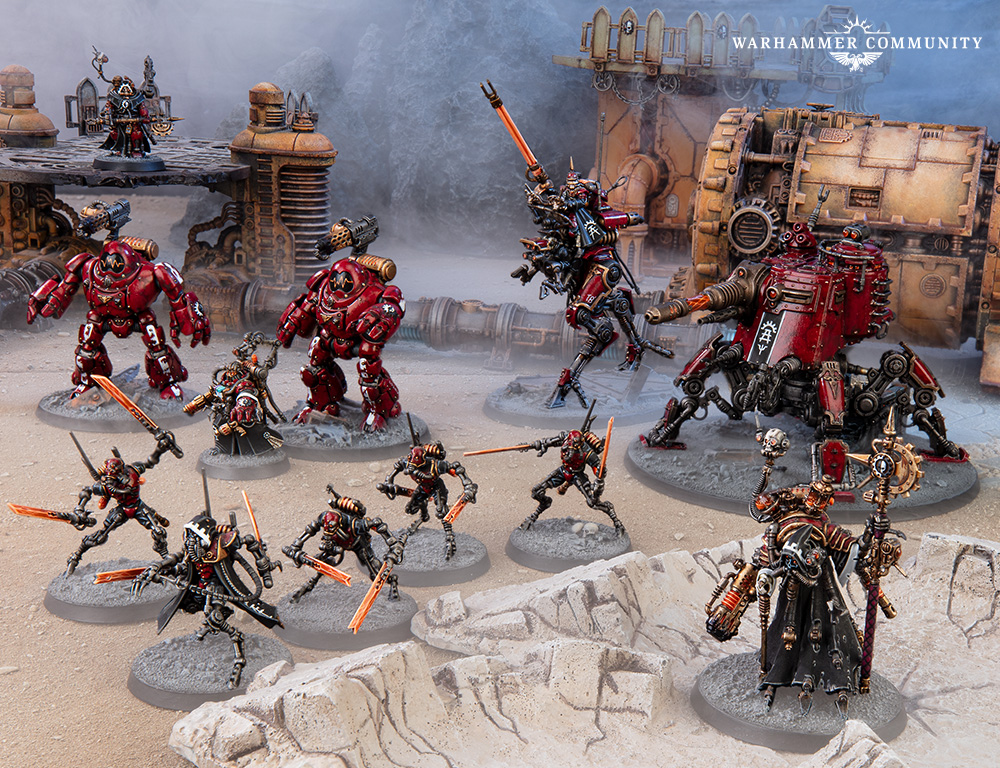
Your Primary score is pretty good because you have a lot of units in a 1,000-point army, so you’ve got a good chance of overwhelming your opponent’s army on objectives and getting to more areas of the battlefield. You also have two large units with good movement and a high OC, with one that reduces your opponent’s OC and the other giving you ‘sticky’ objectives (by which we mean they can move away from an objective and still leave it under your control). This is more OC than I would see in most tournament armies – I think you underestimated your force there!
With Secondary Missions, you’re going to struggle to achieve many of them. If you play Fixed Missions and choose ones you think you can do reliably, like Bring It Down, you’re relying on your opponent bringing units that you can destroy easily each turn. Tanks shouldn’t be a problem, but an all-infantry army would make your Onagers virtually useless. If you’re playing Tactical Missions, your fast units aren’t that durable and your durable units aren’t that fast, so you’ll need to have units in the right place at the right time to achieve your missions, which I think might be tricky to achieve. Engage on All Fronts, for example, would be hard as you don’t have enough fast units. It is also the same with Behind Enemy Lines.
As for damage output, the two Onagers are fearsome anti-tank units and the Kastelan Robots are brutal in combat but, as you identified, the rest of your army will struggle against heavy infantry. You do get a Ballistic Skill bonus thanks to your Protector Imperative army rule, but the downside is that your units will probably not move enough to complete your Secondaries and may struggle with Primaries. You’re trading damage for VP.
Dan: That’s my army analysed. What next?
Stephen: Well you already have a better understanding of your force, which is a great start. The next stage is working out how you can improve your tactics using your existing collection, then deciding if you want to change some of your units. But that will have to wait until next time!
Come back next time to see how Stephen and Dan use this analysis to help Dan build a better army.
Stephen Box is a veteran Warhammer 40,000 player and a master tactician. He runs Vanguard Tactics, a website that helps people to think critically while remaining composed and confident in their ability to play Warhammer 40,000.
* Editor’s Note: When this article was originally published, Dan’s army was 1,000 points. As points values change over time, it’s currently more than that, but the principles remain the same.



